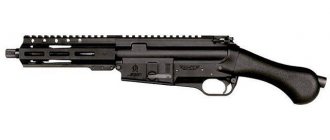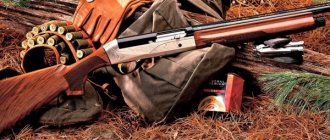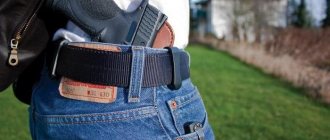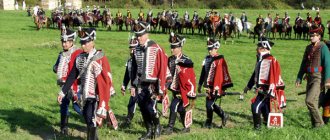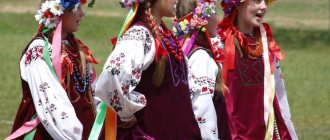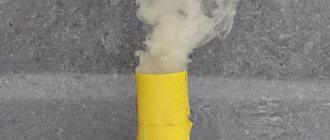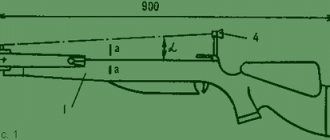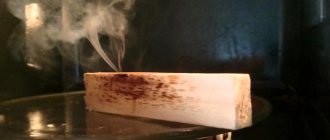Making the hussars' headdress - shako
Recently I was looking on the Internet for material on making a hussar headdress - a shako . Either the pages do not open, or there is no description. I had to analyze everything myself and choose the cheapest option for making a shako . Maybe it will be useful to someone too.
To work you will need:
-Cardboard or sheet of whatman paper
-red material (I took lining)
- black cardboard for the visor (you can paint the cardboard with ink on both sides)
.
-2 buttons (you can use a large yellow sequin)
;
-yellow braid (you can use a ready-made tassel, you can weave a cord from yarn, and make tassels yourself);
- tools: needle and thread, glue stick, stapler, scissors.
1. Prepare whatman paper 52cm * 20cm (I used whatman paper measuring about 52cm around the child’s head of the shako is 20cm + 1.5cm for the hem at the bottom. Place the hem with a line inward and straighten it again. Glue the seam or secure it with a stapler , but so that the smooth part of the bracket is directed towards the head so that the hair does not catch.
2. Cut the red material to the same size, only leave 2.5 cm for the hem at the bottom so that the edge can then be folded inside the Whatman paper so that it does not become shaggy. Sew narrow edges.
3. We cut out the bottom from the same material. The approximate radius for the head circumference is 52 cm = 8.5 cm. Attach the bottom to the main material and stitch it. Place the piece of material on the piece of whatman paper. Fold the edge and stitch or secure with a stapler. Place the hem of the bottom part inside.
.Prepare the visor pattern and cut it with a hem allowance at the junction to the shako . At the seam allowance, we cut out small triangles so that the visor fits snugly to the main part.
5. Sew on the braid, buttons on both sides, and on top we put the braid on the left side.
“This is all for our mothers!” In our kindergarten there was a holiday “This is all for our mothers!” Everyone left with a lot of pleasant impressions. And I want to share with you. And here are our violets Thanks to Irina Kochkina for the idea and for the detailed description of making panels, postcards, and napkins using the knotted batik technique. Everything is real here.
From Nicholas I to Nicholas II
On December 25, 1825, power in the Russian Empire passed to Emperor Nicholas I, who owned the phrase “where once the Russian flag is raised, it should not be lowered.” He ruled until March 1955. During his reign in 1836, an additional 7th squadron, called the reserve squadron, was formed. After 6 years, the emperor ordered the formation of a reserve for the 8th squadron, also a reserve squadron. By 1848 all changes were completed.
The name “His Majesty’s Life Guards Hussar Regiment” was given to the army in honor of the accession of the regiment’s chief, and now Emperor Alexander II, to the throne in February 1855. The following year, the composition of the regiment was changed and began to consist of 4 active squadrons and one in reserve. Since 1975, the reserve squadron has become a reserve squadron.
In 1881, Emperor Alexander II was killed by the People's Volunteers, and power passed to his son Alexander III, under whom, after 2 years, the regiment's composition increased by 2 squadrons, and the reserve squadron was gone: only the guards reserve personnel remained.
The year 1896 was marked by Khodynka, which marked the beginning of the reign of the last Emperor of Russia, who ended his reign on March 15, 1917. 10 days before this, His Majesty’s Life Guards regiment again began to be called the Hussars, which is associated with the abdication of Emperor Nicholas II from the throne. The regiment retained this name until May 8, 1918, the date of its disbandment.
During the Civil War, attempts were made to revive the regiment in the south of Russia. Then what remained of it was a regimental association that existed in exile.
Hussar stage costume: DIY shako
Hussar is one of the most romantic and courageous heroes that boys want to imitate. Hussars were lightly armed horsemen from the 15th to 19th centuries, distinguished from other soldiers by their characteristic clothing. They wore a shako (a tall cylindrical hat with a visor), a mentik (a fur cape), a dolman (a short uniform), chakchirs (leggings), and boots. Elements of uniforms in different armies were made in blue, green, red, white and black.
The easiest option is to buy a hussar costume for a theatrical performance. But if you wish, you can make it yourself, simplifying it somewhat. In this case, you can do without a mentik and limit yourself to only a short uniform (dolman), which can be made on the basis of a dark blue, green or red shirt (blouse) with a stand-up collar. You can trim it with white or gold cord, using it to depict a pattern on the uniform, and also attach metal buttons. Also, make epaulettes from the cord on the shoulders of the shirt. To avoid sewing chakchirs (leggings), take white trousers of a close-fitting style and trim the sides with the same cord.
Petrov's daughter
It was to Elizaveta Petrovna that Russia owed the appearance of hussar regiments, where service took place on a regular basis. According to the staffing table, the Life Guards Hussar Regiment consisted of six squadrons, which included 834 lower ranks, under the command of 73 non-commissioned officers. Next in rank were the officers, of whom there were 37; 14 trumpeters, as well as 972 horses, were assigned to the regiment. In total, 1032 people served in the regiment.
The privilege of the hussars was permission to leave a mustache, unlike other branches of the army, where they strictly monitored the smoothness of the face. Serving members of the Life Guards Hussar Regiment were also exempt from sprinkling their hair with powder, but they were ordered to braid two braids in the area of their temples.
In honor of Empress Elizabeth, on the front of the tashka (flat leather bag) that each hussar had, there was the Empress’s monogram in the form of the letters “E.R.” made of twisted cords, as well as a crown.
Step-by-step instructions for making a hussar's hat. Hussar carnival costume
As you can see, a variety of colors were used in the hussar uniform.
It is enough to take the trousers available in the wardrobe. The color can be black, white, blue, and gray.
Next, we either find a red shirt, turtleneck, sweatshirt, or sew a sleeveless vest (photo below).
Instead of red, it is permissible to take another color, for example, blue, it’s just that red is more common.
We sew paraphernalia onto the shirt. To do this you will need a golden cord or satin ribbon.
Boots are made for the feet (imitation boots).
We make a hussar shako for the head.
Semenovsky Hussar
The Semenovsky Life Guards Regiment is one of the oldest military formations, founded in 1683. For his merits, in 1700 he was awarded the rights of the Old Guard. The dominant color in the uniform of the hussar regiment was blue. Certain requirements were also imposed on the appearance of Semenovites: stately, tall brown-haired or fair-haired people were selected, who were forbidden to wear a beard.
The regimental temple of the Semenovsky regiment was the Vvedensky Cathedral, which is on Zagorodny Prospekt, built with the participation of the architect Benois. The temple does not exist today - it was demolished during the fight against “opium for the people.”
The regiment distinguished itself: in the battle of Narva (back under Peter I); during the capture of the Noteburg fortress in 1702; in the Battle of Poltava in 1709; in the Patriotic War of 1812, including in the battle of Borodino; in the foreign campaign of the Russian army in 1813 (Leipzig, Lützen, Paris).
I would especially like to note the indignation of the personnel of the leading company in October 1820 against the regiment commander Schwartz and the orders of Arakcheev. The matter ended with the disbandment of the Semenovsky regiment and punishment: for the instigators - spitzrutens, for the rest - distant garrisons. And this is under Alexander I “the Blessed”...
Many well-known poets and philosophers throughout Russia served in the Life Guards of the Semenovsky Regiment: Baratynsky and Chaadaev, as well as the Decembrists Bestuzhev-Ryumin and Muravyov-Apostol. Later, the future Marshal Tukhachevsky and the Soviet diplomat Chicherin learned the basics of military affairs here. But Alexander Vasilyevich Suvorov brought great glory to the Semenovsky regiment.
At the beginning of the 20th century, in 1905, the Semenovsky regiment was brought in to suppress riots in Moscow.
In 1917, the Semyonovites went over to the side of the new order and began to be called the “3rd Regiment of the Petrograd City Guard named after Uritsky.” In 1919, there was a massive transition of personnel to the side of the White movement - more than 600 people, which allowed the regiment to retain the name “Semyonovsky”. Historians believe that for the Soviets it was the Semenovsky regiment that personified the foundations of the army of the Russian Empire.
In 1932, those who remained in Russia and returned from emigration were convicted or shot. At the same time, during the destruction of the regimental temple of the Semenovsky regiment, the regimental banner was discovered.
And in the building on Lazaretny Lane, which today houses the world-class historical and medical museum of Russia, there once was a hospital for servicemen of the Semenovsky regiment.
Officers
On January 1, 1909:
- Voeikov Vladimir Nikolaevich - colonel, aide-de-camp, regiment commander (commander), p.152
- Skalon Nikolai Nikolaevich - colonel, p. 152
- Meshchersky Pyotr Nikolaevich, prince - colonel, aide-de-camp, p. 152
- Shevich Georgy Ivanovich - colonel, p. 152
- Groten Pavel Pavlovich - colonel, p. 152
- Ofrosimov Pavel Aleksandrovich - colonel, page 152
- Chakrabon of Siam, His Royal Highness the Prince - Colonel, p.152
- Shcherbatov Pavel Borisovich, prince - captain, p.152
- Yafimovich Mikhail Nikolaevich - captain, page 152
- Prutchenko Nikolai Mikhailovich - captain, page 153
- Molostvov Lev Valerianovich - captain, p.153
- Markozov Dmitry Vasilievich - captain, page 153
- Sollogub Nikolai Adrianovich - captain, page 153
- Skalon Mikhail Nikolaevich - captain, adjutant wing, page 153
- Romanov Boris Vladimirovich, EI Highness the Grand Duke - Captain, p.153
- Yuryevsky Georgy Alexandrovich, His Serene Highness Prince - Staff Captain, p.153
- Frideritsi Alexander Alexandrovich - staff captain, page 153
- Skalon Georgy Nikolaevich - staff captain, page 153
- Zvegintsov Nikolai Ivanovich - staff captain, p. 153
- Smetskoy Boris Aleksandrovich - staff captain, p. 153
- Greve Alexander Alekseevich - staff captain, p. 153
- Vorontsov-Dashkov Illarion Illarionovich, Count - Staff Captain, p.153
- Grevs Alexander Petrovich - staff captain, p. 153
- Velepolsky Alfred Sigismundovich, Count - Staff Captain, p.153
- Nakashidze David Alexandrovich, prince - captain, p.153
- Osten-Saken Nikolai Vladimirovich, Count - Staff Captain, p.153
- Tiran Alexander Nikolaevich - staff captain, p. 153
- Vorontsov-Dashkov Alexander Illarionovich, count - lieutenant, aide-de-camp, p.153
- Romanovsky Alexander Georgievich, EI Highness Prince Duke of Leuchtenberg - lieutenant, aide-de-camp, p.153
- Roop Sergei Khristoforovich - lieutenant, p. 153
- Tolstoy Viktor Mikhailovich, Count - Lieutenant, p.153
- Ignatiev Pavel Alekseevich, Count - Lieutenant, p. 153
- Nai-Pum - lieutenant, p.153
- Frederiks Vladimir Vladimirovich, baron - lieutenant, p.153
- Kushelev Georgy Vladimirovich - lieutenant, page 153
- Velepolsky Albert Sigismundovich, count - cornet, p.153
- Trubnikov Georgy Alexandrovich - cornet, p.153
- Volkov Boris Sergeevich - cornet, p.153
- Katarzhi Viktor Ivanovich - cornet, p.153
- Trubetskoy Sergei Petrovich, prince - cornet, p.153
- Tal Georgy Alexandrovich, background - cornet, p.153
- Raevsky Pyotr Mikhailovich - cornet, p.153
- Bekman Georgy Vladimirovich - cornet, p.153
- Kleinmichel Vladimir Konstantinovich, count - cornet, p.153
- Gall Georgy Alexandrovich - cornet, p.153
- Tolstoy Alexander Mikhailovich, Count - cornet, p.153
- Romanov Gabriel Konstantinovich, E. Highness Prince - Cornet, Wing-Adjutant of the EIV Retinue, p. 153
- Gurko Joseph Vladimirovich - cornet, p.153
- Kaufman Mikhail Petrovich, background - cornet, p.153
On January 1, 1909:
- Voeikov Vladimir Nikolaevich, His Majesty's Retinue, Major General, Regiment Commander
- Meshchersky Pyotr Nikolaevich, prince, aide-de-camp, colonel
- Shevich Georgy Ivanovich, Colonel
- Groten Pavel Pavlovich, Colonel
- Ofrosimov Pavel Alexandrovich, Colonel
- Shcherbatov Pavel Borisovich, prince, captain
- Yafimovich Mikhail Nikolaevich, captain
- Prutchenko Nikolai Mikhailovich, captain
- Molostvov Lev Valerianovich, captain
- Markozov Dmitry Vasilievich, captain
- Sollogub Nikolai Andrianovich, captain
- Skalon Mikhail Nikolaevich, adjutant wing, captain
- Frideritsi Alexander Alexandrovich, captain
- Skalon Georgy Nikolaevich, staff captain
- Zvegintsov Nikolai Ivanovich, staff captain
- Smetskoy Boris Aleksandrovich, staff captain
- Greve Alexander Alekseevich, staff captain
- Vorontsov-Dashkov Illarion Illarionovich, count, captain of staff
- Grevs Alexander Petrovich, staff captain
- Velepolsky Alfred Sigismundovich, count, captain
- Osten-Sacken Nikolai Vladimirovich, count, captain
- Vorontsov-Dashkov Alexander Illarionovich, count, aide-de-camp, staff captain
- Romanovsky Alexander Georgievich, His Imperial Highness Prince, Duke of Leuchtenberg, aide-de-camp, staff captain
- Raevsky Mikhail Mikhailovich, staff captain
- Roop Sergei Khristoforovich, lieutenant
- Ignatiev Pavel Alekseevich, count, lieutenant
- Nai-Pum, lieutenant
- Fredericks Vladimir Vladimirovich, baron, lieutenant
- Kushelev Georgy Vladimirovich, lieutenant
- Volkov Boris Sergeevich, lieutenant
- Katarzhi Viktor Ivanovich, lieutenant
- Tal Georgy Alexandrovich, background, cornet
- Bekman Georgy Vladimirovich, cornet
- Kleinmichel Vladimir Konstantinovich, count, cornet
- Gall Georgy Alexandrovich, cornet
- Tolstoy Alexander Mikhailovich, count, cornet
- Romanov Gabriel Konstantinovich, His Highness the Prince, aide-de-camp, cornet
- Gurko Joseph Vladimirovich, cornet
- Kaufman Mikhail Petrovich, background, cornet
- Shenshin Vladimir Vladimirovich, cornet
- Frederiks-Marazli Georgy Vladimirovich, baron, cornet
- Alferov Alexey Germanovich - cornet
- Grand Duke Romanov Oleg Konstantinovich - cornet. Enlisted 05/23/1913
For 1914:
- Shevich Georgy Ivanovich [without acting. o.], major general, regiment commander
- Zvegintsov Nikolai Ivanovich, Colonel
- Smetskoy Boris Alexandrovich, Colonel
- Greve Alexander Alekseevich, Colonel
- Grevs Alexander Petrovich, captain
- Osten-Saken Nikolai Vladimirovich, count, captain,
- Velepolsky Alfred Sigismundovich, count, captain
- Vorontsov-Dashkov Alexander Illarionovich, count, captain, aide-de-camp
- Raevsky Mikhail Mikhailovich, captain, adjutant wing
- Ignatiev Pavel Alekseevich, count, captain of staff
- Nai-Pum Nikolai Nikolaevich, staff captain
- Volkov Boris Sergeevich, staff captain
- Fredericks Vladimir Vladimirovich, baron, staff captain, regimental adjutant
- Tal Georgy Alexandrovich, background, lieutenant, regimental treasurer
- Romanov Gavriil Konstantinovich [no f.], His Highness Prince, Lieutenant, Aide-de-Camp
- Kleinmichel Vladimir Konstantinovich, count, lieutenant
- Tolstoy Alexander Mikhailovich, count, lieutenant
- Kaufman Mikhail Petrovich, background, lieutenant
- Frederiks-Marazli Georgy Vladimirovich, baron, cornet
- Shenshin Vladimir Vladimirovich, cornet
- Pavlov Georgy Alexandrovich [“Pavlov 1”], cornet
- Pavlov Alexander Alexandrovich [“Pavlov 2”], cornet
- Ignatiev Sergey Alekseevich, count, cornet
- Golitsyn Boris Dmitrievich, His Serene Highness Prince, cornet
- Orlov Alexey Alexandrovich, cornet
- Shenshin Nikolai Vladimirovich ["Shenshin 2"], cornet
- Somov Sergey Sergeevich, cornet
- Gall Mikhail Alexandrovich, cornet
- Kislovsky Andrey Lvovich, cornet
- Bezobrazov Vladimir Vladimirovich, cornet
- Vyazemsky Vladimir Leonidovich, prince, cornet
- Romanov Oleg Konstantinovich [no f.], His Highness the Prince, cornet. 09/29/1914 died from wounds received in battle near the village of Pilvishki in the Vladislavov area 09/27/1914
- Barclay de Tolly-Weimarn Nikolai Loginovich, prince, cornet
- Svyatopolk-Mirsky Alexey Petrovich, prince, cornet
- Akhlestyshev Dmitry Pavlovich, cornet
- Kologrivov Ivan Nikolaevich, cornet
- Maltsov Sergey Sergeevich, cornet
- Ditman Viktor Viktorovich, state councilor, senior doctor
- Lapshin Vladimir Pavlovich, physician, junior doctor
- Alalykin Alexander Yakovlevich, veterinarian
- Tyumenev Alexey Andreevich, collegiate registrar, clerk
- Speransky Ioann Filippovich, archpriest, priest
—
- Nicholas II, His Imperial Majesty the Emperor, Chief of the Regiment
— Listed in the regiment:
- Romanov Alexey Nikolaevich [no f.], His Imperial Highness Heir Tsesarevich and Grand Duke
- Romanov Nikolai Nikolaevich [no f.], His Imperial Highness the Grand Duke
- Romanov Alexander Mikhailovich [no f.], His Imperial Highness the Grand Duke
- Romanov Kirill Vladimirovich [no f.], His Imperial Highness the Grand Duke
- Romanov Boris Vladimirovich [no f.], His Imperial Highness the Grand Duke
- Lek-Chakrabon of Siam, HRH Prince
- Vorontsov-Dashkov Illarion Ivanovich, count, cavalry general, adjutant general
- Meyendorff Feofil Egorovich, baron, adjutant general
- Vasilchikov Sergei Illarionovich, prince, adjutant general
- Engalychev Pavel Nikolaevich, Prince, His Majesty's Retinue, Major General
- Petrovo-Solovovo Boris Mikhailovich, His Majesty's Retinue, Major General
- Voeikov Vladimir Nikolaevich, His Majesty's Retinue, Major General
- Meshchersky Pyotr Nikolaevich, prince, colonel, aide-de-camp
- Shcherbatov Pavel Borisovich, prince, colonel
- Skalon Mikhail Nikolaevich, colonel, adjutant wing
- Frideritsi Alexander Alexandrovich, colonel
- Prutchenko Nikolai Mikhailovich, Colonel
- Skalon Georgy Nikolaevich, Colonel
- Vorontsov-Dashkov Illarion Illarionovich, count, captain
- Romanovsky Alexander Georgievich, His Imperial Highness Prince, Duke of Leuchtenberg, captain, aide-de-camp
Address-calendar.
General painting... for 1914. St. Petersburg, 1914 As of May 1916:
- Golitsyn Boris Dmitrievich, prince, lieutenant
- Shenshin Nikolay Vladimirovich, lieutenant
- Kislovsky Andrey Lvovich, lieutenant
- Orlov, lieutenant
Commanders
- 08/11/1896 – 06/01/1902 - Gagarin Alexander Petrovich, prince, major general, from 06/01/1902 of His Majesty’s retinue, major general
- 06/08/1902 – 09/06/1905 - Engalychev Pavel Nikolaevich, Prince, His Majesty’s Retinue, Major General
- 09/24/1905 – 08/11/1907 - Petrovo-Solovovo Boris Mikhailovich, colonel, adjutant wing, from 11/06/1905 of His Majesty’s Retinue, Major General
- 08/11/1907 – 12/24/1913 - Voeikov Vladimir Nikolaevich, colonel, aide-de-camp, from 12/06/1909 of His Majesty’s Retinue, Major General
- 12/24/1913 – 08/04/1915 - Shevich Georgy Ivanovich, Major General, from 03/22/1915 of His Majesty’s Retinue, Major General
- 05.08.1915 – 03.1917 - Levshin Dmitry Fedorovich, Major General, from 06.11.1915 of His Majesty’s Retinue, Major General
- 03.1917 - 10.1917 - Kantakuzin Vladimir Georgievich prince, colonel
- 11.1917 – ? – Nettelgorst Vitaly Pavlovich Baron, Colonel
